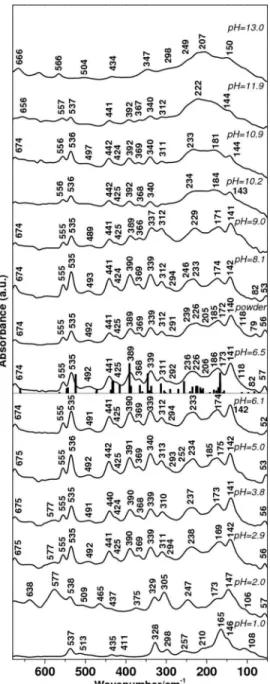Far infrared spectra of solid state aliphatic amino acids in different protonation states.
Texte intégral
Figure




Documents relatifs
Here we present a study, based on quantum chemistry modelling, of the possible link between spectroscopic quantities, a complexity measure, a chirality descriptor
A preliminary analysis of the results shows that they are far from a Debye type relaxation, but the damped harmonic oscillator model fits them.. A low frequency mode is found
Besides, even extra fine resolution (≤1.0Å) is not sufficient for direct estimation of HOMA values based on Cartesian coordinates provided by PDB files. The values of mean bond
2 in the main text, shows a comparison of the aliphatic features on 67P, ISM, and IOM, in arbitrary units, with offsets: average I/F spectrum of 67P (black line with error bars)
These few examples encourage the thought that the phenomenon of being moved does have a formal object: the emotion consists in sensitivity to the fact that certain important
Larger molecules such as peptides when bearing significant positive charges (pl higher than 9.00 in a solution of pH around 7.0), were actively transmitted or retained due to their
The combined organic layers were washed with brine, then dried over magnesium sulfate, concentrated and purified by silica gel chromatography (2% ethyl acetate
The rotational clusters are fully resolved and the good signal-to- noise ratio has enabled precise measurements of transition intensities (92 cold band lines and 96 Dyad − Dyad hot
